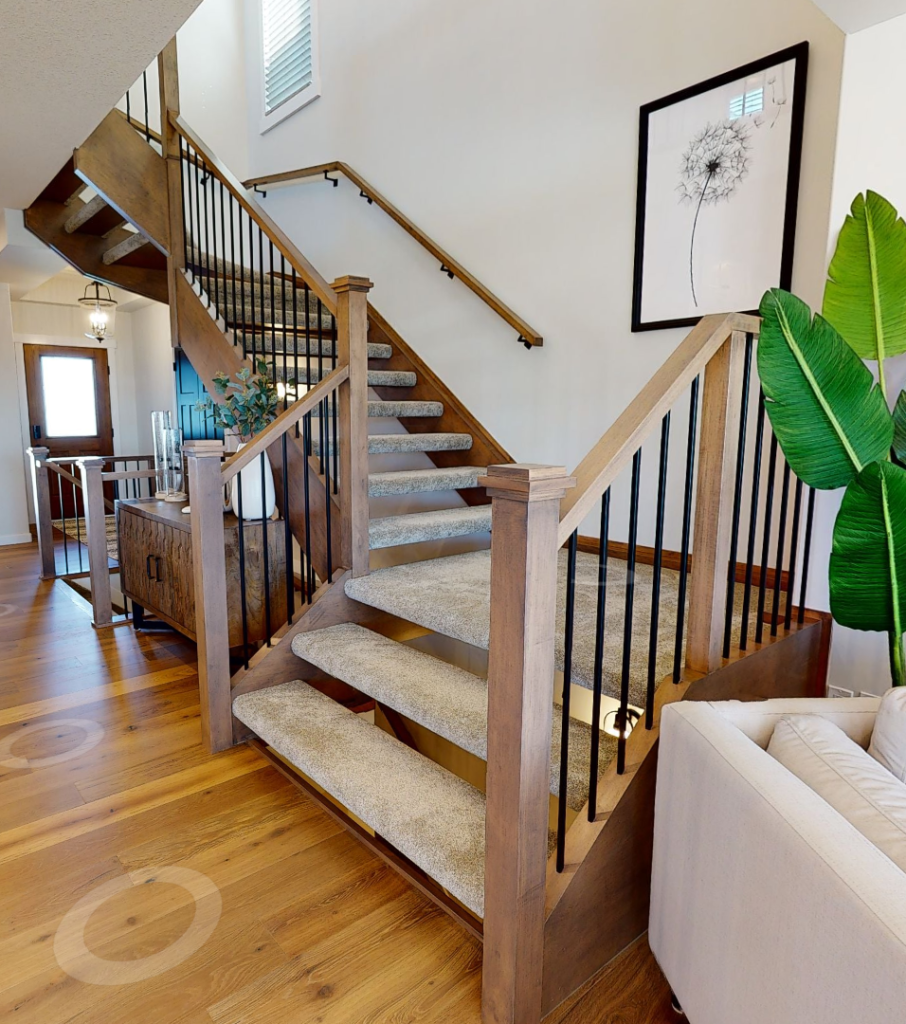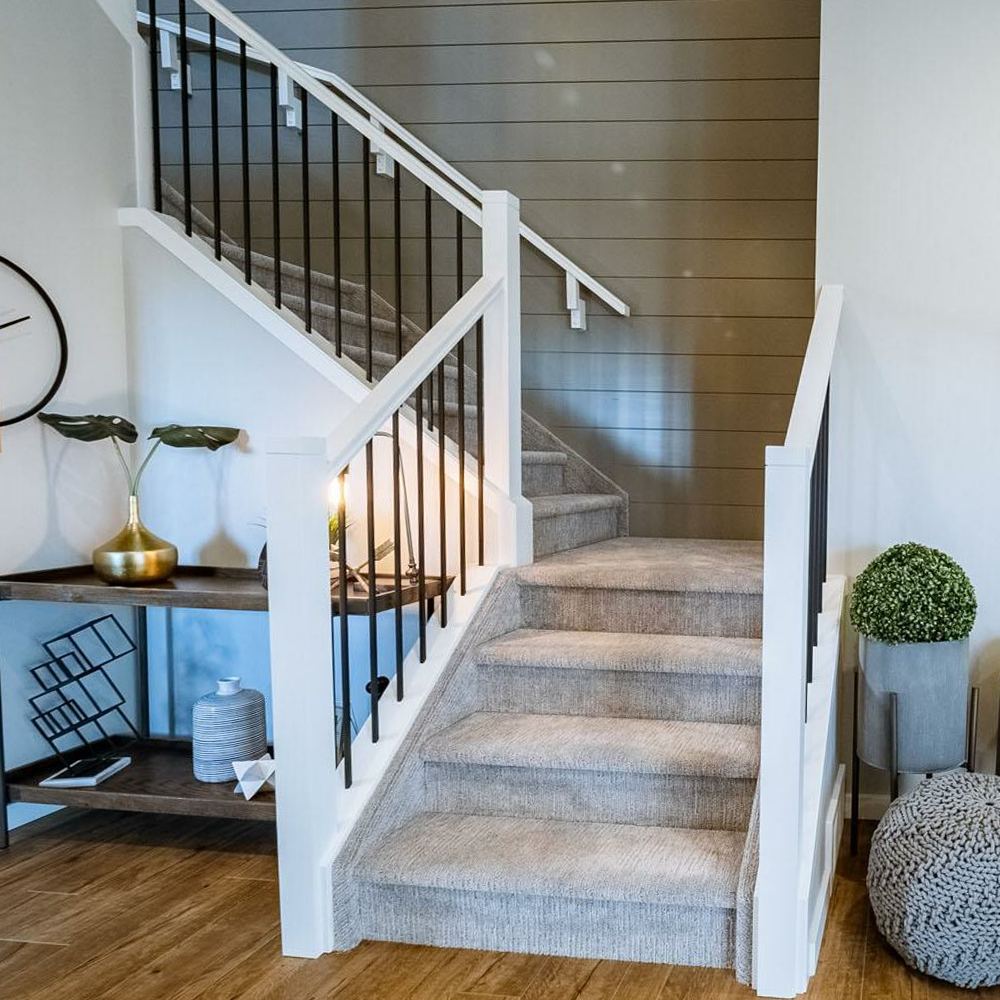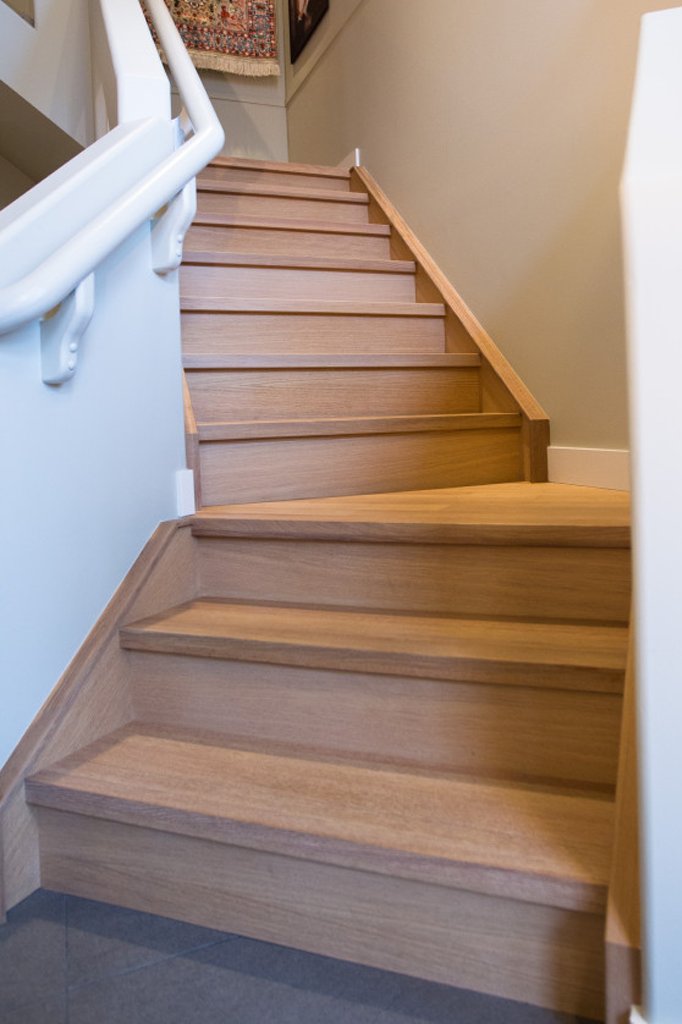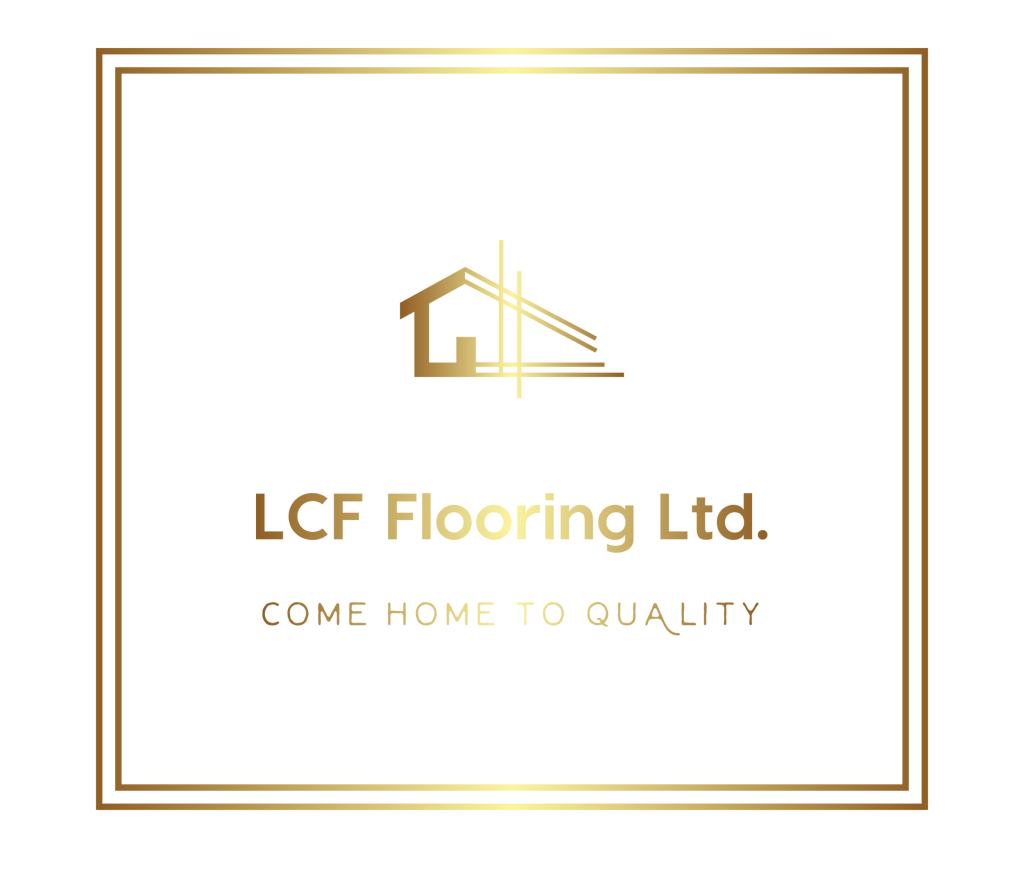A large percentage of residential buildings have staircases leading up and/or down to additional levels. With so many homes needing stairs, there naturally are many different types of staircases that people choose to build.
Even though many different styles of staircases exist, there are 3 main types of stairs that you will find in most homes. Here are the important details of each style, and a guide on how to identify which style is in your home.
1. Open-Riser Stairs
While not the most common on our list, open-riser stairs are usually seen in modern and newer homes. An open riser helps to make a space feel more open, and allows for better sightlines through hallways and around corners.
Open-riser stairs can be built with carpet and with hard-surface materials such as hardwood or luxury vinyl plank, though carpet is the easier and more cost-effective choice in most instances.
The open-riser style does tend to cost more overall than its closed-riser counterparts, but they are unique enough to be worth the higher price.
This style of staircase is quite difficult to retrofit, though not impossible in some cases. If you are really set on having this style of staircase, one of our experts can take a look at your existing stairs and let you know if it is possible to convert them to the open-riser style.
How can you identify if your stairs are open-riser? It’s simple: have a look at the riser (the vertical section that is between each step) and check if you can see through the gap like in this photo.
If you can see between the treads (steps), you have open-riser stairs. If not, you have closed-riser stairs.

2. Carpeted Stairs
Carpeted stairs are the most common type of staircase that you will find in most homes. They are a great cost-effective option, and many people are more comfortable with them as they are seen as more stable than hard-surface stairs.
The main characteristic that sets them apart from other types of stairs is their box-out stringers. The stringer is the vertical edge that borders both sides of every step, and box-out stringers are used to frame a carpet staircase. As you can see in the image below, the box-out stringers are wrapped in carpet to create the familiar finished look of these carpet stairs.
This style of carpet stairs is also the type most commonly retrofitted with hard-surface materials, as you will see in the next part of this article.

How can you identify if you have the traditional style of carpeted stairs? Simply look at the edges, or stringers, of your stairs. If your stringers are wrapped in carpet and frame your stairs like in the photo above, then you will know that you have this style of carpeted stairs.
If your staircase is carpeted but does not have the traditional box-out stringers that are also wrapped in carpet, that simply means that either a) you have a staircase that is meant for commercial spaces, or b) your home is older and the stairs were built before box-out stringers were commonly used.
3. Vinyl/Hard-Surface Stairs
The second most common style of residential stairs is the vinyl or hard-surface staircase. This style is favored by people with pets and busy families, and is easiest to keep clean.
In this example you may notice that these stairs also feature box-out stringers. This is because when this home was built, the stairs were originally covered with carpet. Now the homeowner has decided to make a change, and has had the stairs retrofitted with vinyl plank.
Hard-surface stairs come with a higher cost, but they tend to last a lot longer than your traditional carpeted staircases.
Another upside to vinyl and hard-surface stairs is the fact that they are very easy to maintain. Your pets will not damage the material and it will never stain or show wear marks over time. Clean them just as you clean the rest of your vinyl plank floors, and never worry about fraying carpet or trapped smells again.
So how can you identify if your stairs are hard-surface like these? Have a look at the nosings (the edge that you step on) and see if it has a squared or slightly rounded profile like in this photo. If it does, you can be sure that yours are hard surface!
Newer homes are sometimes built with hard surface staircases from the beginning, and will not feature these box-out stringers. This style of stringer is not required for hard-surface stairs, and some homeowners prefer the way they look without them. It is up to your preference to decide which you like more, as they function virtually the same.
Now that you have learned of the most common styles of stairs, go ahead and identify yours, and let us know which ones you have! If you want to try to update your staircaise yourself, here is a quick DIY guide to help you get started.







